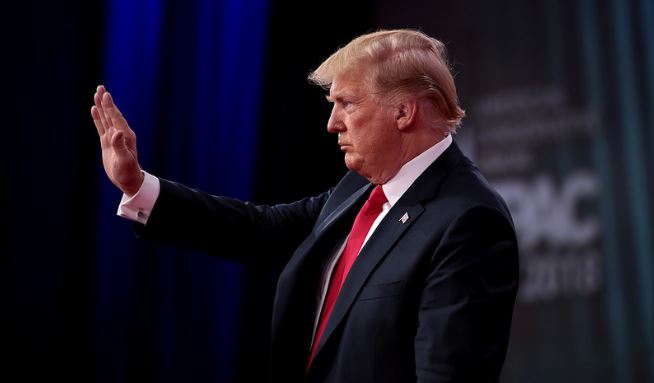March 1 (UPI) — Proposed legislation to form a Space Force, a sixth branch of the U.S. Armed Forces, was sent to Congress, the Defense Department announced on Friday.
The legislation follows a directive in February from President Donald Trump.
If approved, it would make a Space Force equal in status to the Army, Navy, Marine Corps, Air Force and Coast Guard, and the first new service branch since the Air Force was established in 1947.
The proposal calls for $50 million to establish the branch, with headquarters in the Pentagon, and an eventual budget of about $500 million. That figure amounts to 0.07 percent of the annual Defense Department budget.
It also calls for establishment of the Space Force within the Air Force, with a four-star Chief of Staff in charge, who would have a seat on the Joint Chiefs of Staff. It also establishes a civilian as Undersecretary of the Air Force for Space as supervisor of the branch.
The Space Force would be authorized to organize, train and equip forces “to provide for freedom of operation in, from and to the space domain; to provide independent military options for joint and national leadership; and to enable the lethality and effectiveness of the joint force,” the proposal says.
Acting Secretary of Defense Patrick M. Shanahan was enthusiastic about the potential for a sixth defense agency.
“This is an historic moment for our nation,” Shanahan said in a separate statement on Friday. “The Department of Defense’s legislative proposal to establish the United States Space Force as the sixth branch of the Armed Forces is a strategic step towards securing America’s vital national interests in space. Our approach follows President Trump’s bold vision for space and commits resources to deliver more capability faster, ensuring the United States can compete, deter, and, if needed, win in a complex domain.”
In October, Vice President Mike Pence told the National Space Council that the administration plans to launch the Space Force by 2020. His comments came after renewed worries that the defense ministries of China and Russia could be outpacing the United States in placing weapons in space.
“China is integrating certain new technologies and fielding those capabilities faster than the U.S.,” Chris Shank, director of the Defense Department’s Strategic Capabilities Office, told a conference of the American Institute of Aeronautics and Astronautics in January.
“That means we have to be more responsive. China had 39 launches [in 2018], the U.S. had 31, Russia had 20, Europe had eight, and [China] landed a robotic mission on the dark side of the moon — a first.”






